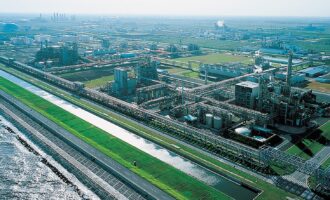
3M to discontinue production and use of PFAS by 2025
3M, which produces more than 60,000 products, announced that it will exit per- and polyfluoroalkyl substance (PFAS) manufacturing and work to discontinue the use of PFAS across its product portfolio by the end of 2025.
Based in Maplewood, Minnesota, U.S.A., its vast array of products range from adhesives, abrasives, laminates, passive fire protection, personal protective equipment, window films, paint protection films, dental and orthodontic products, electrical and electronic connecting and insulating materials, medical products, car-care products, electronic circuits, healthcare software and optical films.
3M’s decision is based on a thorough evaluation of the evolving external landscape, including multiple factors such as accelerating regulatory trends focused on reducing or eliminating the presence of PFAS in the environment and changing stakeholder expectations.
PFAS are a group of manufactured chemicals that have been used in industry and consumer products since the 1940s because of their useful properties. There are thousands of different PFAS, some of which have been more widely used and studied than others.
Perfluorooctanoic Acid (PFOA) and Perfluorooctane Sulfonate (PFOS), for example, are two of the most widely used and studied chemicals in the PFAS group. PFOA and PFOS have been replaced in the United States with other PFAS in recent years.
On August 26, 2022, the United States Environmental Protection Agency (EPA) issued a proposal to designate two of the most widely used PFAS as hazardous substances under CERCLA, or Superfund. This rulemaking would increase transparency around releases of these harmful chemicals and help to hold polluters accountable for cleaning up their contamination.
In December 2022, EPA issued a companion memo to the EPA NPDES memo released in April 2022. The National Pollutant Discharge Elimination System (NPDES) program is an important tool established by the Clean Water Act (CWA) to help address water pollution by regulating point sources that discharge pollutants to waters of the United States. This expanded version enhances the initial memo to include additional permitting mechanisms and complementary recommendations, which together will further accelerate efforts to reduce PFAS discharges to waterways. The memo recommends that states and municipalities use the most current sampling and analysis methods in their NPDES programs to identify known or suspected sources of PFAS and to take actions using their pretreatment and permitting authorities, such as imposing technology-based limits on sources of PFAS discharges. The memo will also help the Agency obtain comprehensive information through monitoring on the sources and quantities of PFAS discharges, informing other EPA efforts to address PFAS.
One common characteristic of concern of PFAS is that many break down very slowly and can build up in people, animals, and the environment over time.
3M said its current annual net sales of manufactured PFAS are approximately USD1.3 billion with estimated EBITDA margins of approximately 16%. In addition, as also noted above, 3M will work to discontinue the use of PFAS across our product portfolio by the end of 2025, which represents a small portion of 3M’s overall revenue.
Over the course of the exit from PFAS manufacturing, 3M expects to incur related total pre-tax charges of approximately USD1.3 billion to USD2.3 billion. Approximately 70-80% of the total is expected to be non-cash. 3M intends to reflect the fourth quarter 2022 costs as an adjustment in arriving at results, adjusted for special items. Beginning in 2023, 3M also expects to adjust for the results of manufactured PFAS in arriving at results, adjusted for special items.
“This is a moment that demands the kind of innovation 3M is known for,” said 3M Chairman and CEO Mike Roman. “While PFAS can be safely made and used, we also see an opportunity to lead in a rapidly evolving external regulatory and business landscape to make the greatest impact for those we serve. This action is another example of how we are positioning 3M for continued sustainable growth by optimizing our portfolio, innovating for our customers, and delivering long-term value for our shareholders.”









